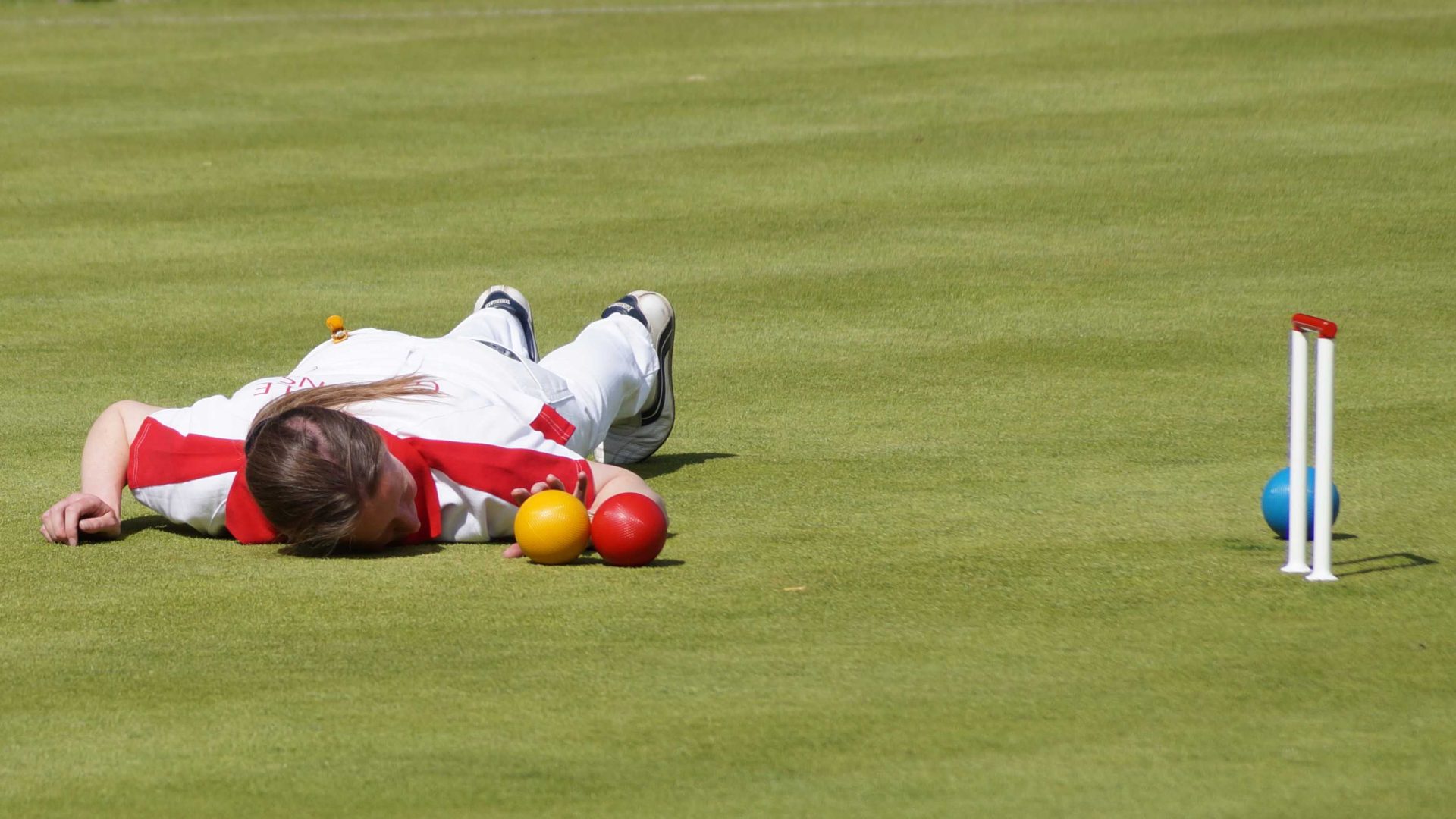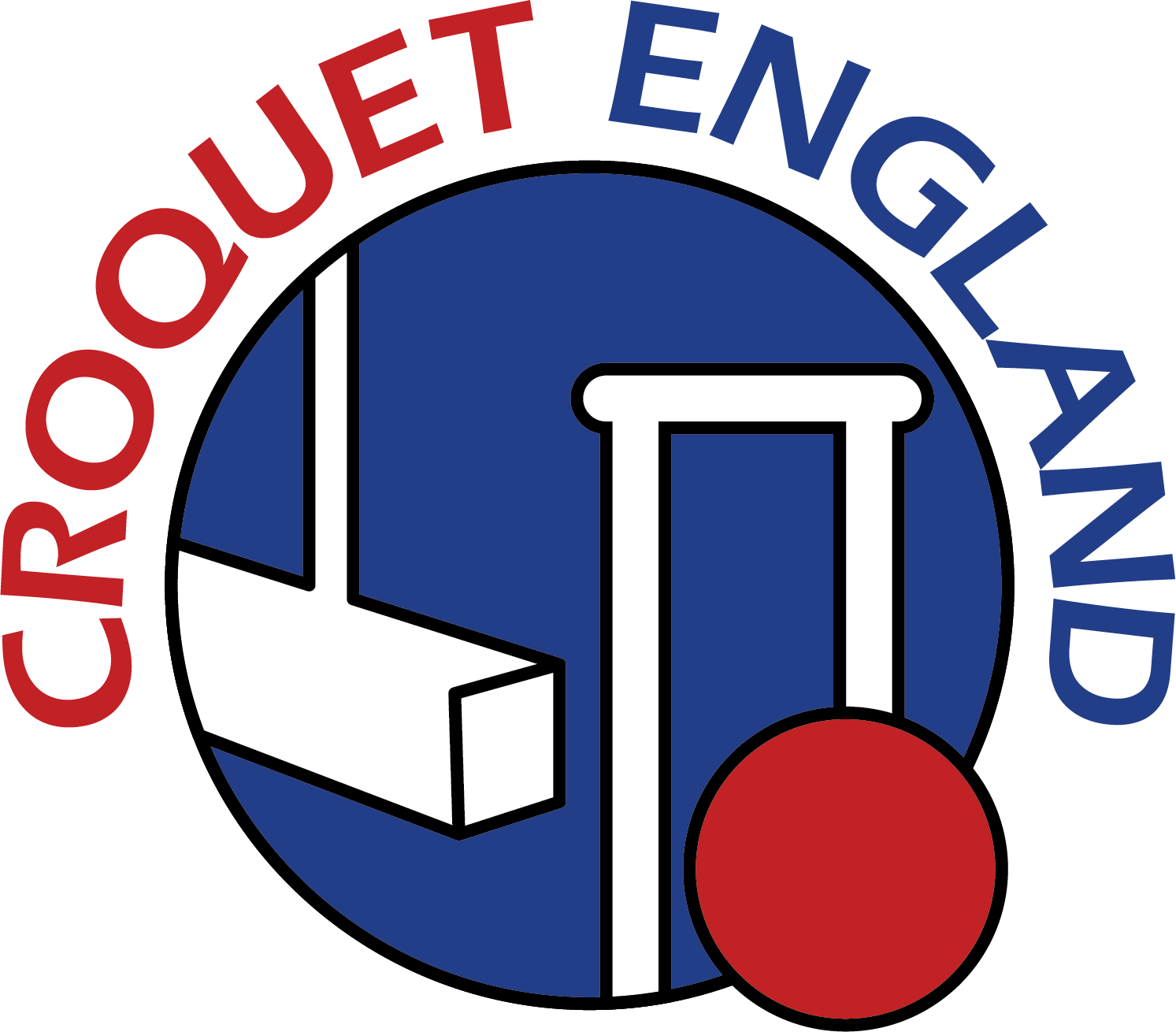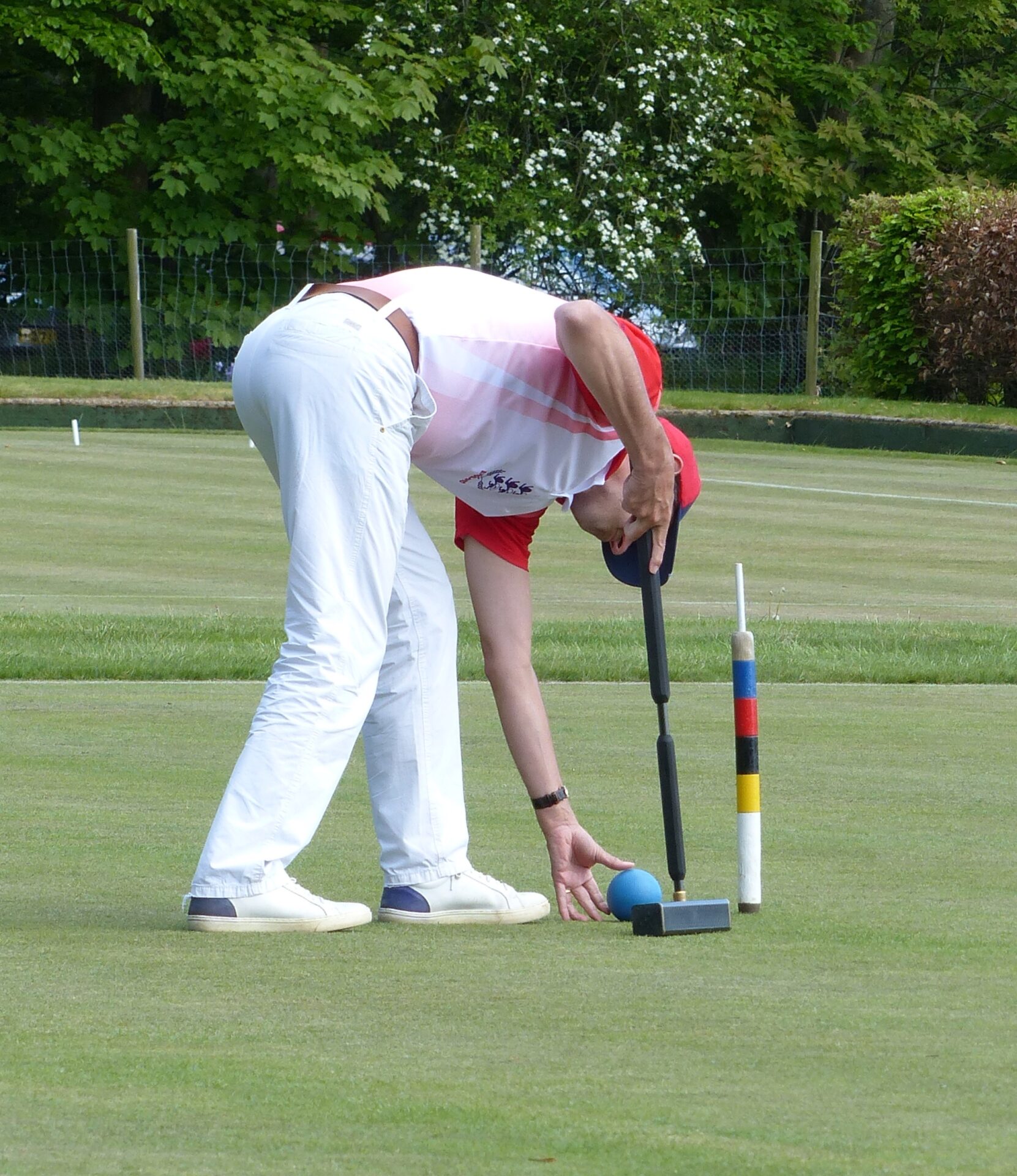
How to play Association Croquet
Association Croquet has many similarities to snooker. It is a game of break play and strategy that you never stop learning. It can be played at beginner level, with a shorter, quicker version of the game known as short croquet, right up to full international level. If you’re looking to play a more casual game of croquet, you might want to try Garden Croquet instead.
Association Croquet is based on the concept of turns with more than one shot and is similar to snooker played on grass. Association Croquet was invented in the mid-19th century. There are some rumours that snooker was invented by the Indian army soon after the monsoon rain prevented croquet play!
How to win a game of Association Croquet
The game is played by two players (or sides), each with two balls. The object of the game is to score 12 hoop points and a peg point with each ball before the other side is able to score these points. The balls must go through the hoops in a specific order, which is shown in the picture. Note that North, South, East and West are not real points of the compass.
As it is played at the tournament level, Association Croquet players must use careful tactics to beat their opponents.
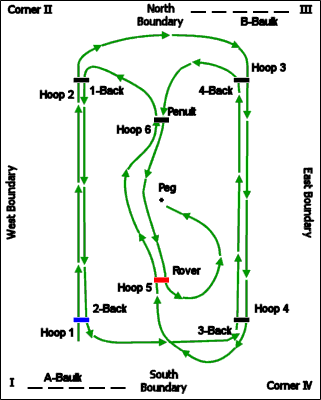
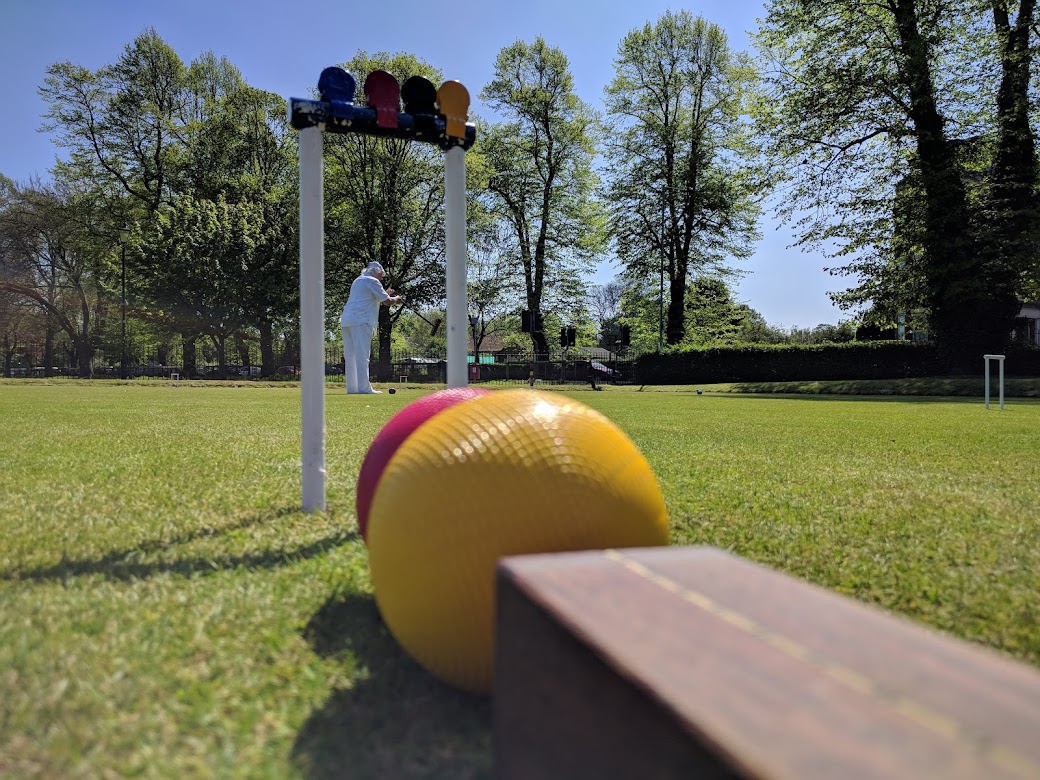
How is Association Croquet different to other types of croquet?
Golf Croquet consists entirely of single ball shots in which the only ball to move is the one being hit with the mallet. Association Croquet has ‘croquet stokes’ (from which the game gets its name) where two balls are placed in contact with each other and both balls have to move when the shot is played. By learning the different ways these strokes are played, the balls can be moved to positions enabling a series of shots to be played one after another. This is known as ‘playing a break’. By mastering this skill, a top-class player can win a game in only two turns.
GC players wanting to try AC can do so by adding the 3 strokes shown in this video to their skillset.
How To: Transition from Golf Croquet to Association Croquet with these 3 strokes
Basic rules of Association Croquet
A summary of the game is given below. To read the full list of rules in more detail, learn more about Association Croquet rules.
- A game consists of a series of turns, each of one or more strokes, which are played by hitting a stationary ball with a mallet. One player plays the blue and black balls, the other the red and yellow (or green and brown versus pink and white).
- The players have alternate turns. At the start of a turn, its player, who is known as the striker, chooses which of the balls to play throughout that turn. The ball chosen is known as the ‘striker’s ball’.
- A ball scores a hoop point by passing through its next hoop in the required direction. The winner is the first player to score the 12 hoop points in the sequence shown in Diagram 1 and then score the peg point by hitting it, for both their balls, a total of 26 points.
- A player is initially entitled to one stroke in a turn, after which the turn ends unless, in that stroke, the striker’s ball has scored a hoop point or hit another ball.
- When a hoop point is scored, the striker is entitled to play one continuation stroke.
- When the striker’s ball hits another live ball, the striker is said to have made a roquet on that ball. At the end of the stroke, the striker’s ball is said to become ‘a ball in hand’ and the striker becomes entitled to play a croquet stroke. The striker’s ball is placed in any position in contact with the roqueted ball. The striker then plays the croquet stroke by striking the striker’s ball, causing both balls to move. After the croquet stroke, the striker plays a continuation stroke – unless the turn has ended because a ball has been sent off the court or for some other reason.
- A ball that may be roqueted is known as a ‘live’ ball; one from which croquet has already been taken, a ‘dead’ ball. The striker must not attempt to take croquet from a dead ball; if this occurs, the turn ends. When a new turn is started, and on each occasion the striker’s ball runs its hoop in order, all the balls become live again. Thus by a series of strokes, the striker may score more than one hoop during a turn, which is known as making a break.
